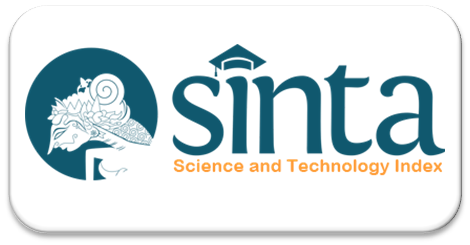GAMBARAN FAKTOR RISIKO KEJADIAN BAYI BERAT LAHIR RENDAH (BBLR) DI RSUD dr. R. GOETENG TAROENADIBRATA PURBALINGGA TAHUN 2013
DOI:
https://doi.org/10.35960/vm.v7i1.260Abstract
Infant Low Birth Weight (LBW) is a newborn whose weight at birth of less than 2500 grams (up
to 2499 grams). The cause of LBW in general because of several factors, including maternal
factors such as disease (anemia, bleeding, IMS, premature rupture of membranes, preeklampsi
and eclampsia), age, parity, socioeconomic circumstances. Fetal factors such as infection of the
fetus and multiple pregnancies, as well as environmental factors. In dr. R. Goeteng
Taroenadibrata Purbalingga, LBW in 2013 as many as 237 cases (19.47%).The study aims to
describe risk factors of low birth weight (LBW) by maternal factors in dr. R. Goeteng
Taroenadibrata Purbalingga 2013. This research is descriptive quantitative research with cross
sectional study with retrospective time approach. Sampling in this study using total sampling,
sample of this research is all infants with low birth weight based medical record dr. R. Goeteng
Taroenadibrata Purbalingga the year 2013 as many as 237 cases. Measuring instruments used
master table and type of data is secondary data. Data were analyzed using univariate. The result
showed a risk factor for low birth weight by the age of majority is 20-35 years as many as 101
respondents (65.3%), based on the parity mostly primiparas total of 133 respondents (56.1%)
and by disease or pregnancy complications mostly experienced respondent is preeclampsia were
92 respondents (38.8%). Risk factors of low birth weight (LBW) in dr. R. Goeteng
Taroenadibrata Purbalingga in 2013, mostly aged 20-35, primiparous parity and have a history
of preeclampsia.
Keywords: risk factors, Infant Low Birth Weight (LBW)
Downloads
Published
How to Cite
Issue
Section
License
Submitted paper will be firstly reviewed by the editors to determine whether the paper meet the edition theme and submission guidelines. Papers which meet the theme and the guidelines will be assigned to selected reviewers for peer-reviews. Viva Medika: Jurnal Kesehatan, Kebidanan dan Keperawatan is a double blind peer-reviewed journal which involves reviewers based on their experties relevant to the topic of the paper. Final decision of paper acceptance is solely decided by the editors according to reviewers' comment.
Plagiarism and self-plagiarism are prohibited. Viva Medika: Jurnal Kesehatan, Kebidanan dan Keperawatan uses PlagiarismCheckerX and iThenticate to scan papers for detecting plagiarism. Thus, Appropriate citation and quotation should be used

.png)








